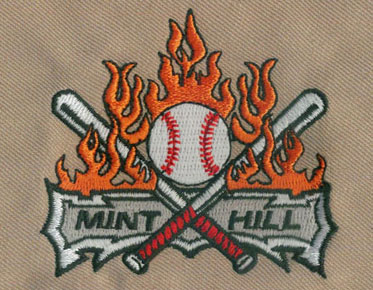What Program Opens Embroidery Files?
Embroidery files play a crucial role in the
world of digitized embroidery.
However, understanding which program opens specific embroidery file formats can
be challenging for newcomers and even experienced embroiderers. In this
article, we will explore different embroidery file formats, compatible software
programs, and highlight the services provided by Eagle Digitizing for
embroidery digitization needs.
l Understanding Embroidery File Formats
l Brother Embroidery Machines and PES
Files
l Tajima Embroidery Machines and DST
Files
l Embroidery Software Programs for
Multiple Formats
l Eagle Digitizing's Embroidery Digitization Services
1. Understanding Embroidery File Formats:
Embroidery files come in various formats,
including PES, DST, EXP, JEF, and more. Each format is associated with specific
embroidery machine brands and models. It is essential to identify the correct
file format for compatibility.
2. Brother Embroidery Machines and PES Files:
PES files are commonly used by Brother embroidery machines. The
Brother Embroidery Software, such as PE-DESIGN, allows users to open and edit
PES files, providing design customization options and stitch editing
capabilities.
3. Tajima Embroidery Machines and DST Files:
DST files are widely supported by Tajima
embroidery machines. Tajima's Pulse software, such as PulseID or Pulse
Ambassador, enables users to open and manipulate DST files, providing advanced
design editing features and stitch modifications.
4. Embroidery Software Programs for Multiple Formats:
Several embroidery software programs support multiple file formats, making them versatile for different embroidery machine brands. Examples include Wilcom's EmbroideryStudio, Hatch by Wilcom, and Floriani Total Control, among others. These programs allow users to open and edit various embroidery file formats, providing extensive design and customization capabilities.
5. Eagle Digitizing's Embroidery Digitization Services:
Eagle Digitizing specializes in professional embroidery digitization services. Their skilled team can transform artwork and designs into
high-quality embroidery files compatible with various embroidery machine brands
and models. With their expertise, they ensure that every intricate detail is
accurately captured in the digitized file.
In addition to compatibility, Eagle Digitizing
offers a range of additional digitizing services to enhance the embroidery process. They provide stitch counts to ensure optimal
stitch density, which is crucial for achieving high-quality results. Their
experts also offer thread color suggestions to enhance the aesthetic appeal of
the designs. Furthermore, if adjustments are required, Eagle Digitizing can
make the necessary modifications to align the digitized file with the client's
vision and requirements.
Conclusion:
Understanding embroidery file formats is essential for embroiderers to ensure seamless compatibility and optimal results. Eagle Digitizing's professional digitization services cater to the diverse needs of their clients. With their expertise, they transform artwork and designs into high-quality embroidery files that are compatible with various embroidery machine brands and models. Their additional services, such as stitch counts, thread color suggestions, and adjustments, contribute to their commitment to delivering exceptional digitization solutions. Trust Eagle Digitizing for reliable and top-notch embroidery digitizing services.
FAQs:
1. Can I open a PES file using Tajima's Pulse
software?
No, Tajima's Pulse software primarily supports
DST files. PES files are associated with Brother embroidery machines and are
compatible with Brother's software programs.
2. Can I use Wilcom's EmbroideryStudio to open
EXP files?
Yes, Wilcom's EmbroideryStudio supports various
embroidery file formats, including EXP. It provides comprehensive design
editing and customization options for EXP files.
3. Does Eagle Digitizing offer rush
digitization services?
Yes, Eagle Digitizing offers rush digitization
services for urgent embroidery projects. You can contact their customer support
to discuss your specific requirements and there is no rush fee.


